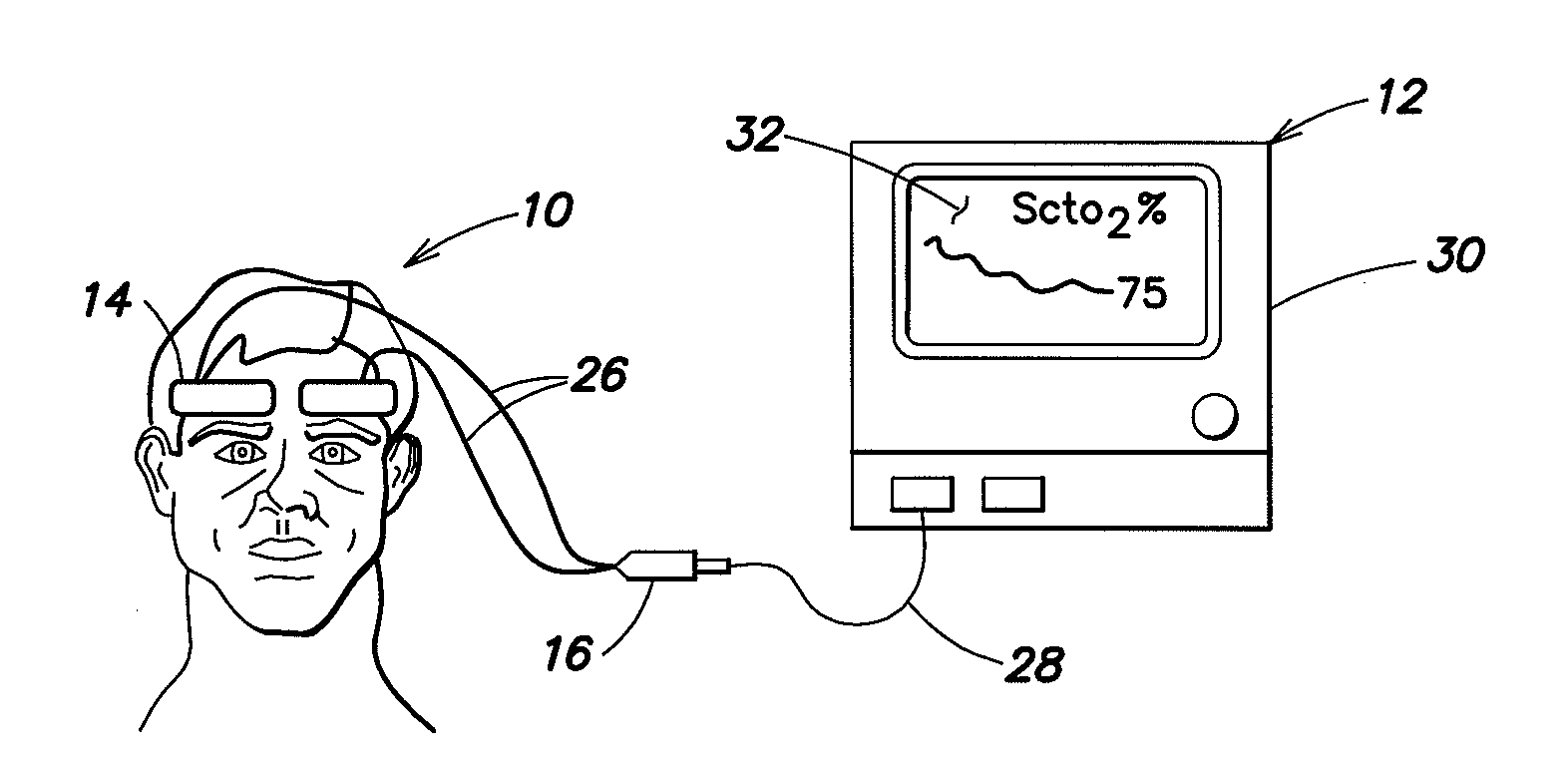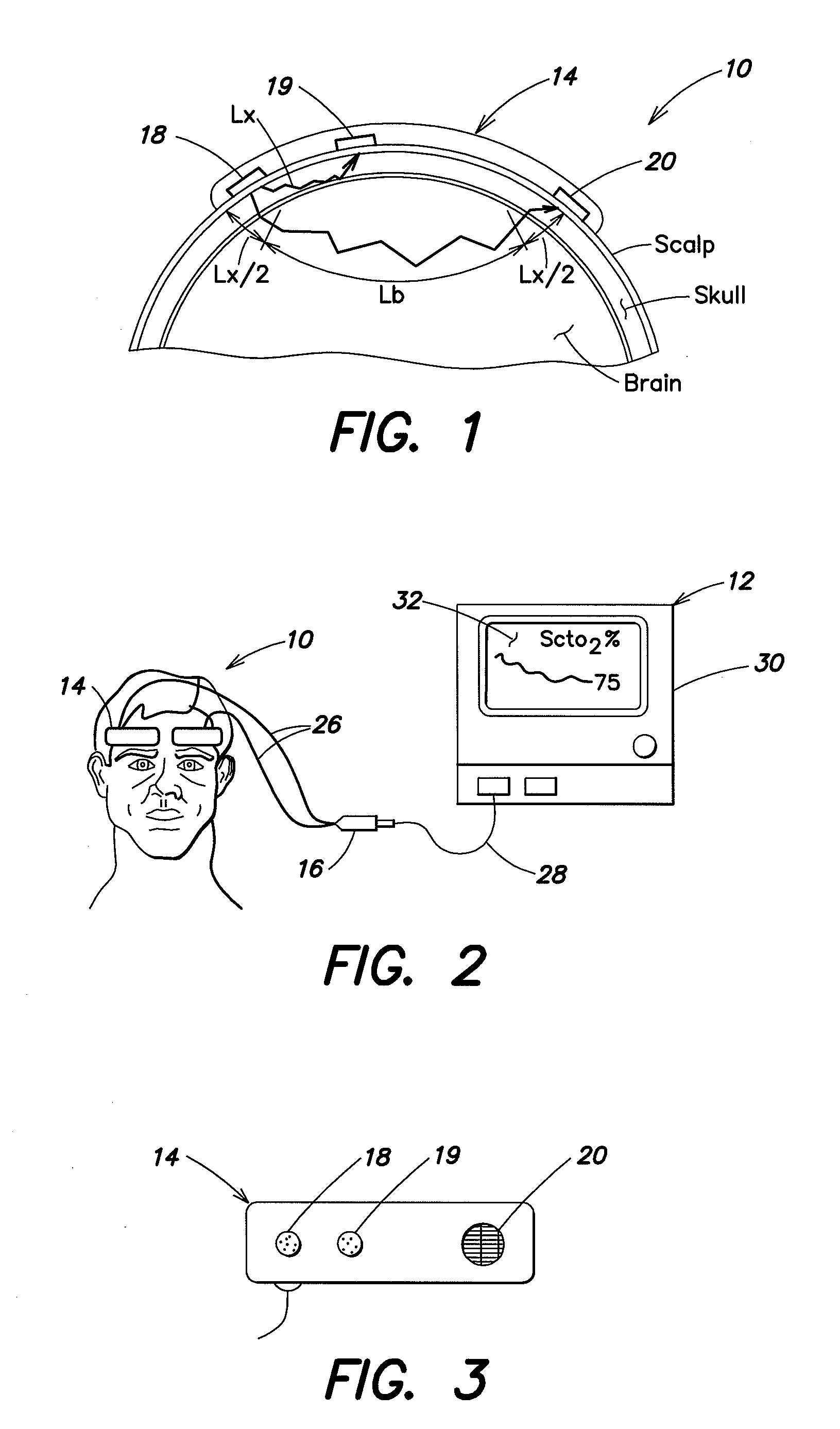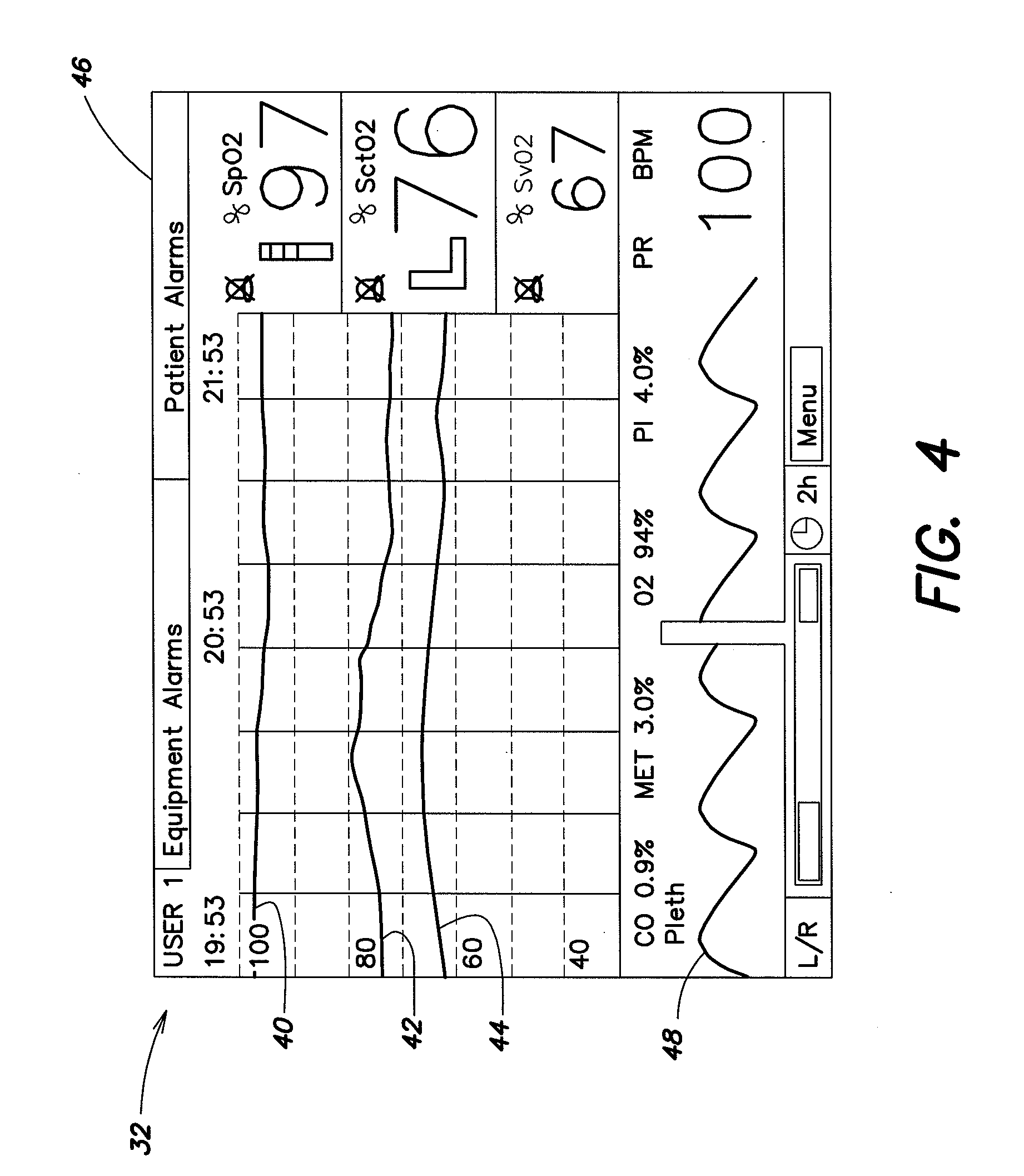Indicators For A Spectrophotometric System
- Summary
- Abstract
- Description
- Claims
- Application Information
AI Technical Summary
Benefits of technology
Problems solved by technology
Method used
Image
Examples
Embodiment Construction
[0028]Referring to FIGS. 1-3, a spectrophotometric system may be similar to that described and illustrated in the aforementioned U.S. Published Patent Application No. 2004 / 0024297, which provides for determined absolute values of tissue oxygen saturation. However, the spectrophotometric system described herein is not limited to use with any particular type of oxygenation information. For example, it may be used with absolute tissue oxygen saturation, such as those determined by the aforementioned U.S. Pat. No. 6,456,862, or with determined relative changes in oxygen concentration. The spectrophotometric system includes a sensor portion 10 and monitor portion 12. The sensor portion 10 includes a pair of sensor assembly housings 14 and a connector housing 16. Each sensor assembly housing 14 is a flexible structure that can be attached directly to a location on the body (e.g., the head) of a human subject. The sensor assembly housing 14 may also be referred to hereinafter for simplicit...
PUM
 Login to View More
Login to View More Abstract
Description
Claims
Application Information
 Login to View More
Login to View More - R&D
- Intellectual Property
- Life Sciences
- Materials
- Tech Scout
- Unparalleled Data Quality
- Higher Quality Content
- 60% Fewer Hallucinations
Browse by: Latest US Patents, China's latest patents, Technical Efficacy Thesaurus, Application Domain, Technology Topic, Popular Technical Reports.
© 2025 PatSnap. All rights reserved.Legal|Privacy policy|Modern Slavery Act Transparency Statement|Sitemap|About US| Contact US: help@patsnap.com



